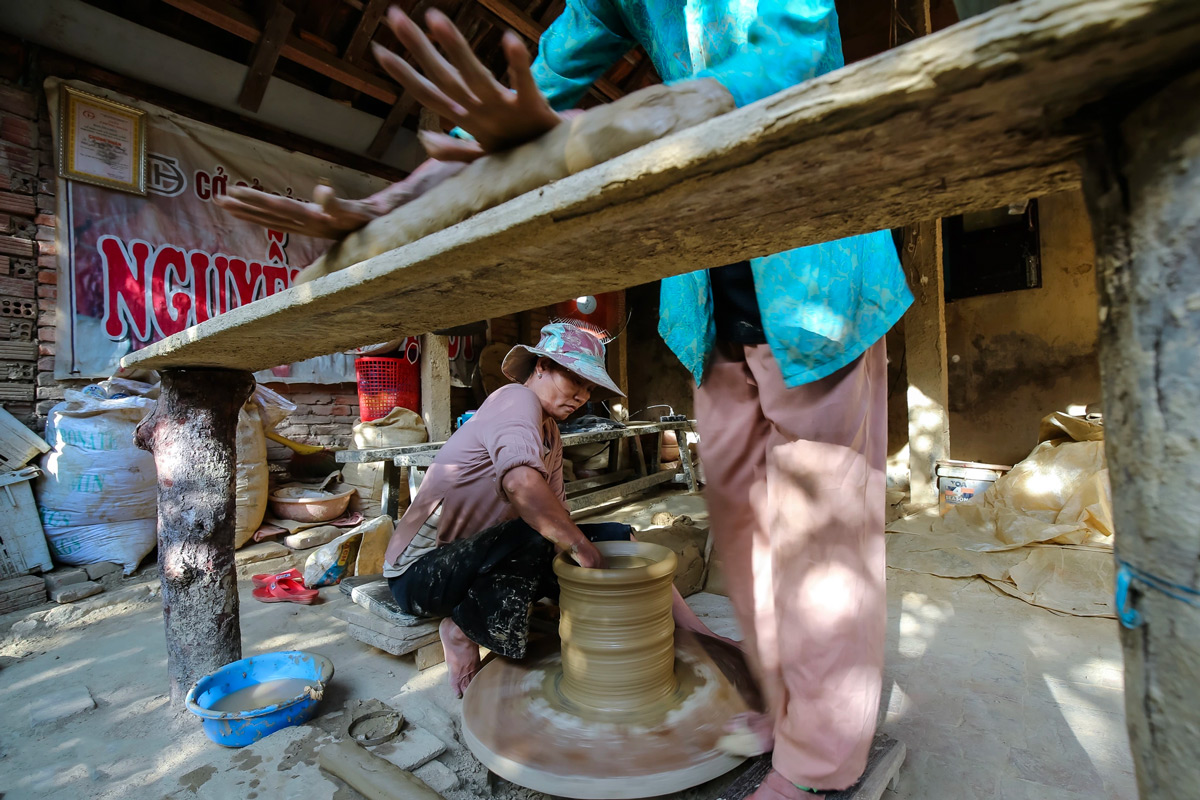Thanh Ha Pottery Village Hoi An | The Ultimate Guide
When you spend some time in Hoi An, Thanh Ha Pottery Village often comes up as a recommended activity. I’ve been there several times-sometimes to show friends around when they’re visiting, other times just to get out of the city center.
It’s close by, easy to access, and you’ll still find real, traditional craftsmanship, even if the place is clearly set up for tourists. So, is it really worth the trip? Here’s a straightforward guide, no fluff, just based on my own visits and what I’ve seen on the ground.
Practical Information for Visiting Thanh Ha Pottery Village

Opening Hours
The village is open every day, usually from 8:00 AM to 5:30 PM. Mornings are quieter, especially on weekdays.
Entrance Fees
- Village entrance: 35,000 VND per person
- Terracotta Park (optional): 40,000 VND
- Combo ticket (village + museum + park): 70,000 VND
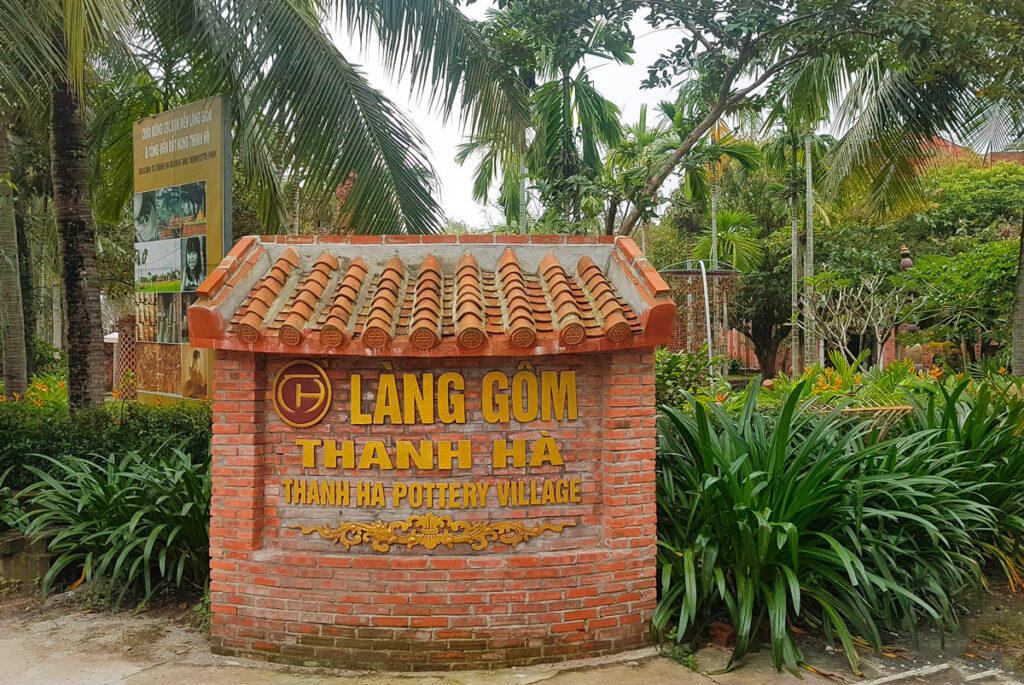
How to Get There
- By bicycle: 20 to 30 minutes from Hoi An Old Town
- By scooter: around 10 minutes
- By private boat: about 30 minutes – more expensive, but a nice way to enjoy the river. Expect to pay around 150,000 VND for one person, or 500,000 VND for three (negotiable).
When to Visit Thanh Ha Pottery Village

The village is open every day from 8:00 AM and usually closes around 5:30 PM (often a bit later in practice). If you want to avoid the heat and the crowds, it’s best to visit on a weekday in the morning.
Tour groups tend to arrive in the middle or late afternoon. Even then, the village isn’t packed, but it’s better to go earlier if you want a quieter experience.
Thanh Ha Pottery Village at a Glance

Thanh Ha Pottery Village is sometimes called a “living museum.” Locals have been making pottery here for over 500 years, and many still use the traditional two-person potter’s wheel.
The red brick kilns, often built in the courtyards of family homes, release the distinctive scent of fired clay that drifts through the village.
According to legend, artisans from Thanh Hoa settled in Hoi An in the early 16th century. They passed their craft down through generations, and the tradition has continued ever since.


Pottery from the village has been supplied to provinces ranging from Thua Thien Hue to Binh Dinh. Over time, the village also began exporting pieces abroad to countries like Japan, China, and Spain via the trading port of Hoi An.
During the Nguyen dynasty, Thanh Ha potters were invited to create decorative pieces for the imperial palace. Their reputation soon spread internationally, shaping the entire cultural identity of the village around this unique craftsmanship.
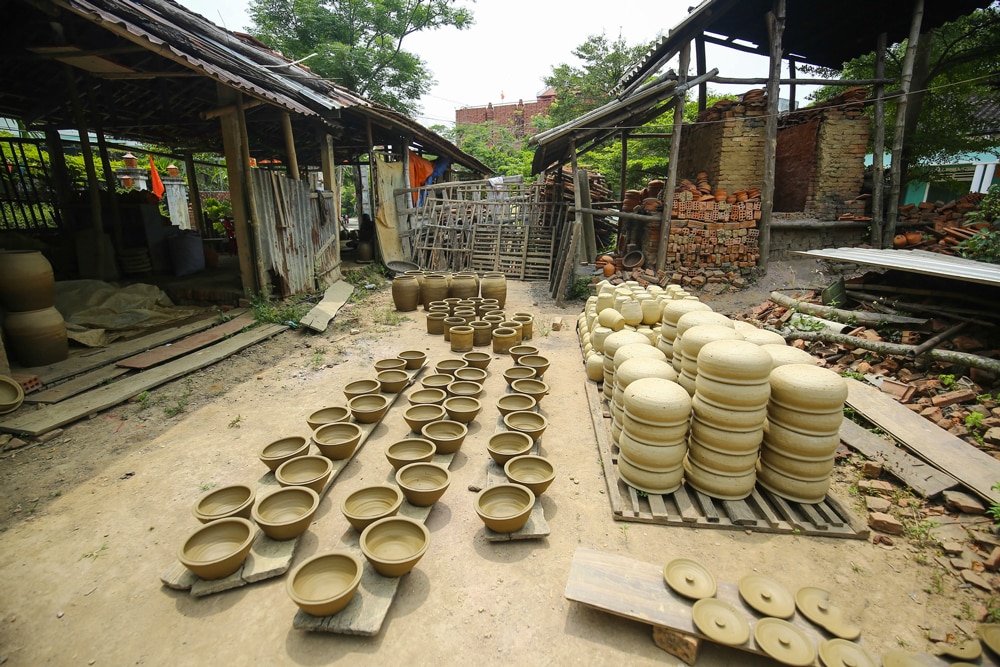
All pottery in Thanh Ha is made entirely by hand, using traditional techniques of mixing, molding, drying, and firing the clay.
In the past, clay was collected directly from riverbeds and nearby rice fields. Farmers would extract it while leveling their land, then send it to the village of Thanh Ha.
Today, most of the clay comes from Quang Nam Province, about 12 kilometers from Hoi An. Over several days, villagers gradually add water to the clay and cover it with tarps to retain moisture and make it easier to work with.
What to Do in Thanh Ha Pottery Village
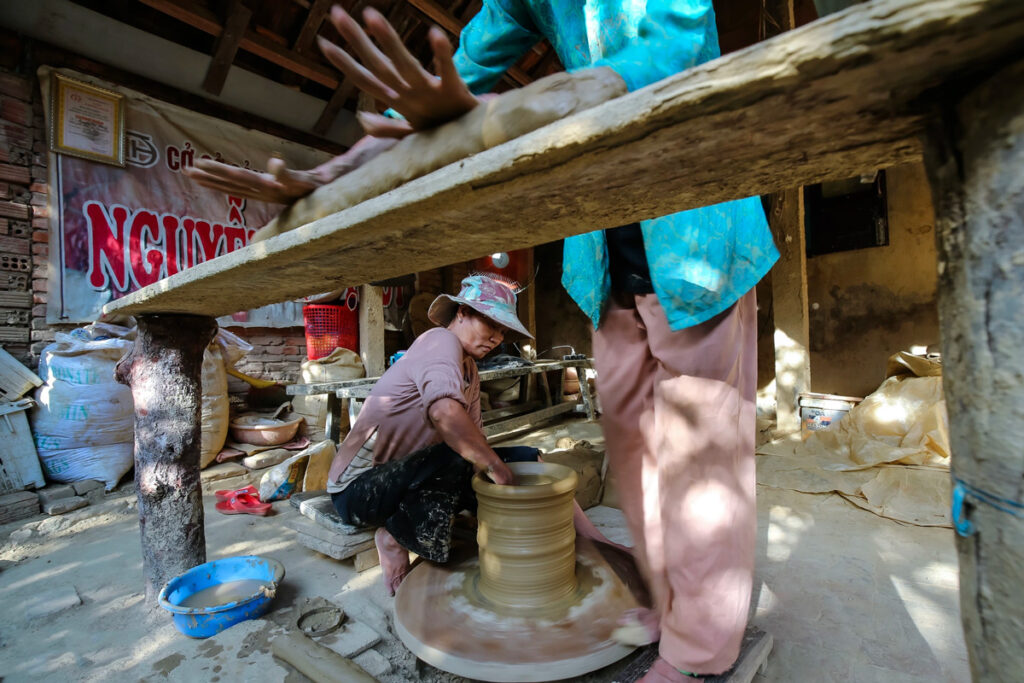
1. Pottery – The Main Attraction
This is the real reason to come to Thanh Ha. The village specializes in traditional pottery, still handmade using techniques passed down from generation to generation. As soon as you pass the entrance gate, you’re free to wander through the alleys. Almost every house is a family-run workshop.
You’ll see artisans at work, often right outside their homes:
- Some shape the clay in pairs using a traditional manual potter’s wheel
- Others sculpt or paint pieces entirely by hand
- At the back of the village, you can also spot old red brick kilns still in use
- And if you’re lucky, you might see artisans returning by boat with fresh clay
The village produces both functional items (pots, mugs, jars…) and decorative pieces like figurines, clay whistles, To He (representing the Chinese zodiac animals), as well as traditional masks and more surprising pieces – like a terracotta Manneken Pis or even Doraemon.
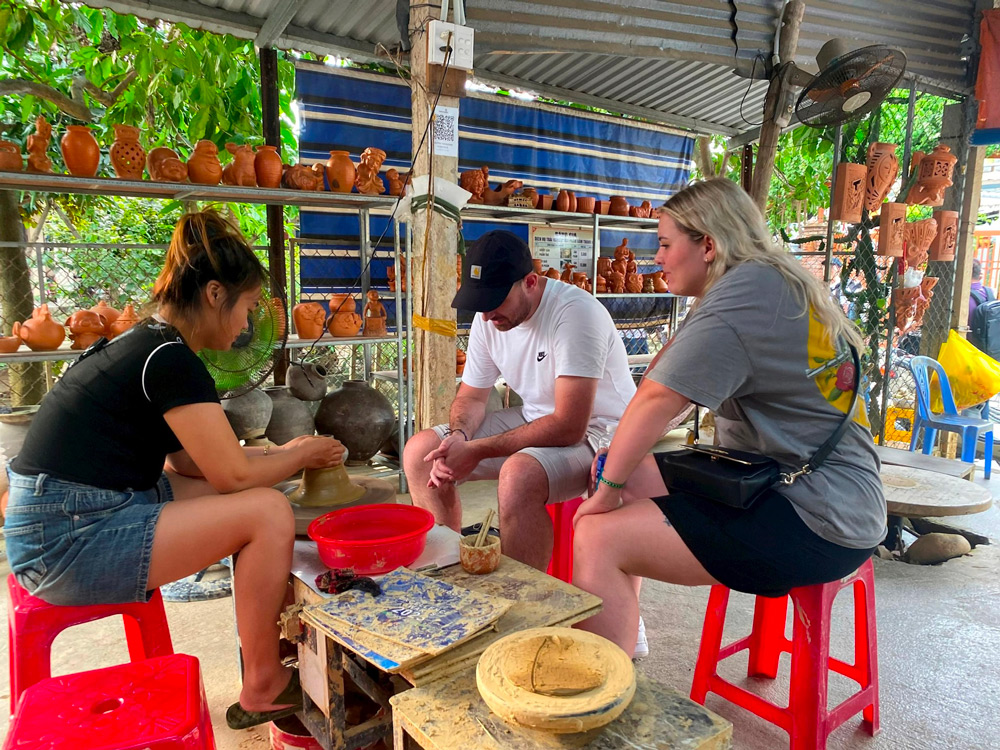

Here are a few workshops I’ve tried and recommend:
- Pottery Mỹ Linh
- Cơ Sở Sản Xuất Gốm Thúy Pottery Riverside
- Cơ sở sản xuất gốm Lê Văn Nhật
With your entry ticket, you’re entitled to a beginner pottery workshop and a small souvenir piece. Personally, I picked a whistling pig, since I was born in the year of the pig.
You can also join a more complete workshop (ranging from 50,000 to 150,000 VND, depending on the size of the piece): you’ll get to shape and paint your own creation, and take it home with you.
2. Terracotta Park
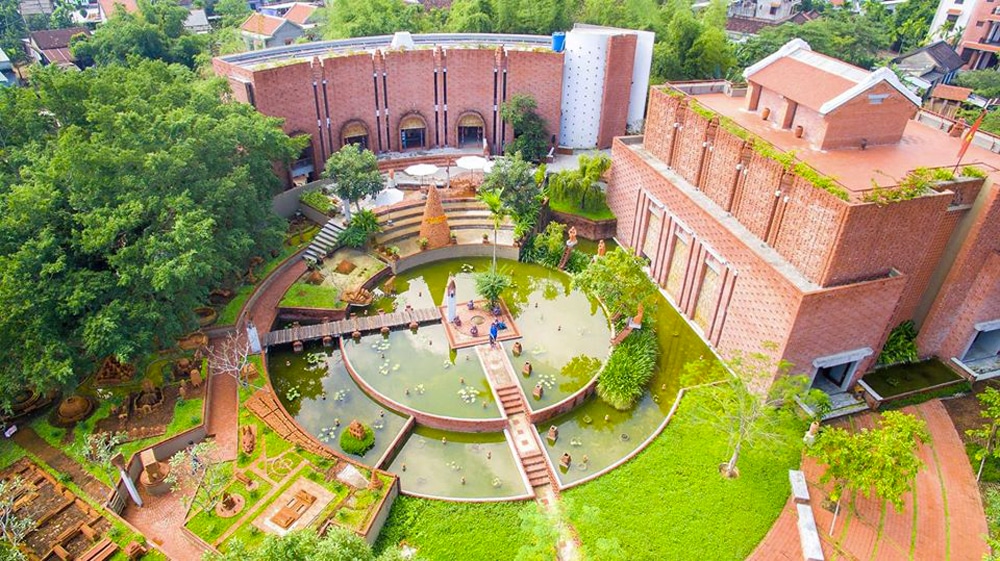
Located at the entrance of the village, the Terracotta Park features miniature terracotta replicas of famous landmarks from around the world: the Taj Mahal, the Leaning Tower of Pisa, the Statue of Liberty, and more.
The park is well-maintained and visitor-friendly, with:
- a walking path
- a few photo spots
- a museum
- and a small workshop area
My take: it’s not essential. If you have the combo ticket or you’re visiting with kids, it can be a fun extra. But the vibe is much more touristy and less authentic than the actual workshops in the village.
3. A Stroll Through a Vietnamese Village
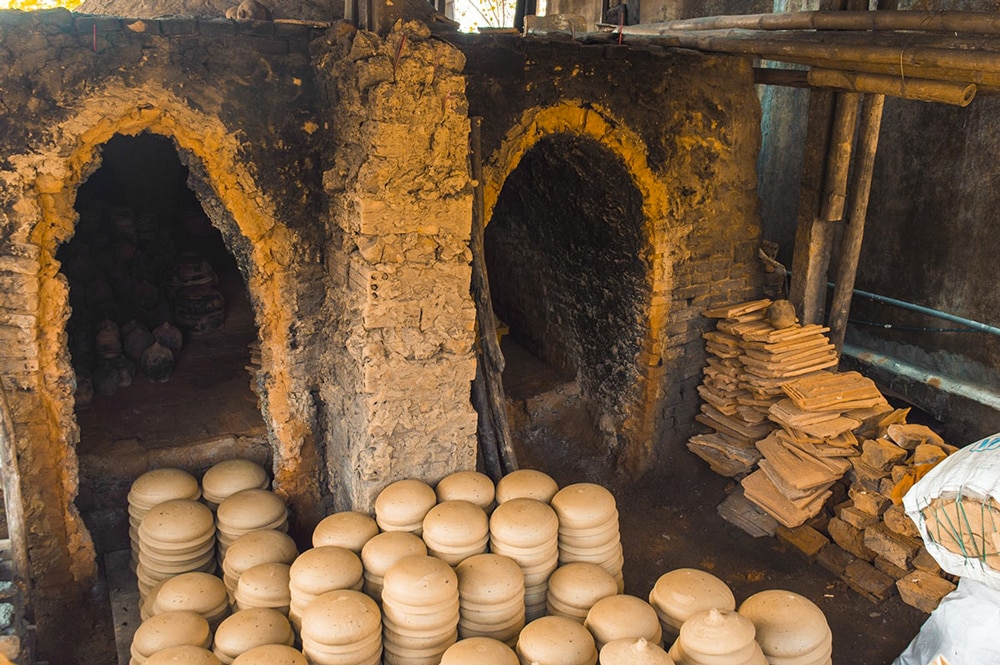
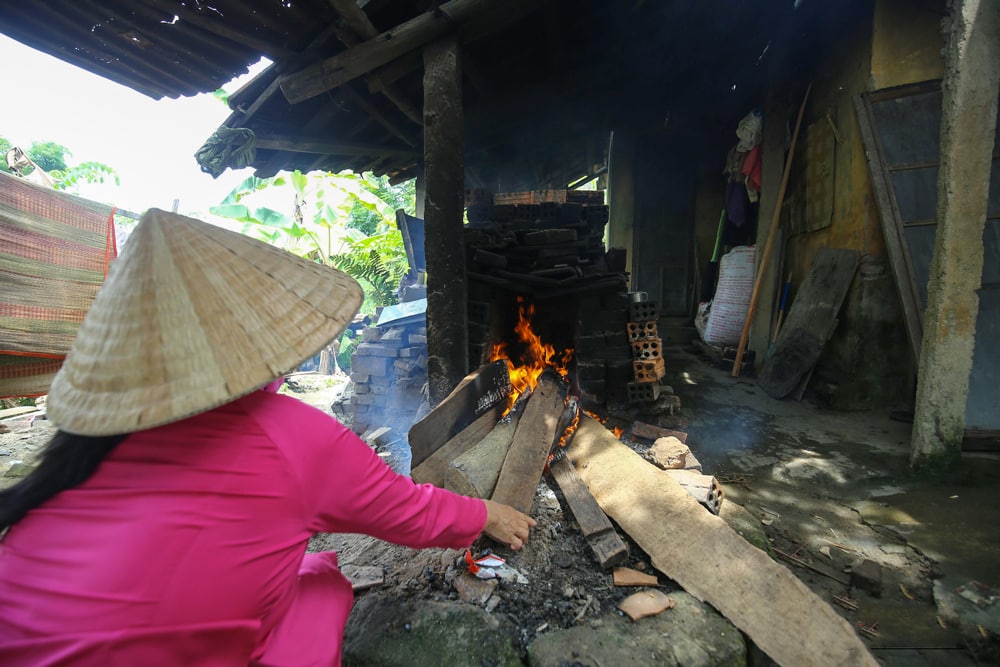
Beyond pottery, Thanh Ha is still a typical Vietnamese village. The narrow lanes, low houses, and everyday life scenes create a peaceful atmosphere, especially on weekdays.
It’s not really an “activity” in itself, but it’s a pleasant complement to the visit – a chance to wander, observe, and take in local life. And it’s a great way to step out of Hoi An’s Old Town without going far.
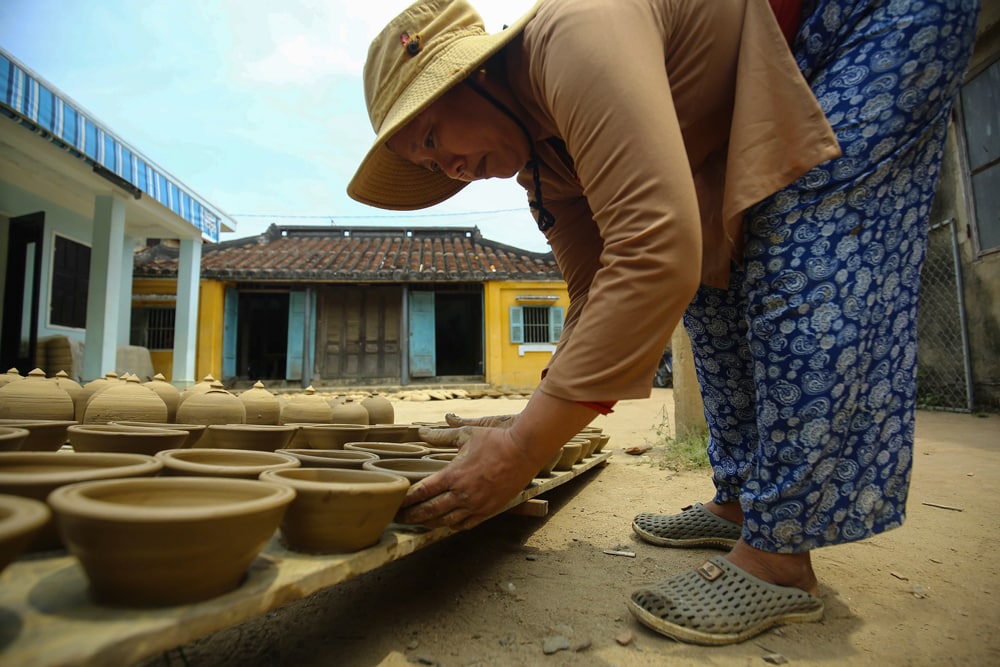
Thanh Ha Pottery Village – Pros & Cons
- ✅ Authentic, living craftsmanship, still practiced daily
- ✅ Easy to explore on foot, no fixed route
- ✅ Workshops are open, and the artisans are friendly
- ✅ You can observe, chat, and even try it yourself
- ✅ Close to Hoi An, easy to visit in a few hours
- ✅ Affordable prices for workshops and souvenirs
What could be disappointing
- ❌ The site is very touristy, especially on weekends and holidays
- ❌ Some workshops are just focused on selling
- ❌ The village is small – a quick visit if you don’t take your time
- ❌ The atmosphere can be noisy with tour groups and guides
- ❌ The Terracotta Park lacks the soul of the village’s artisan spirit
My Opinion
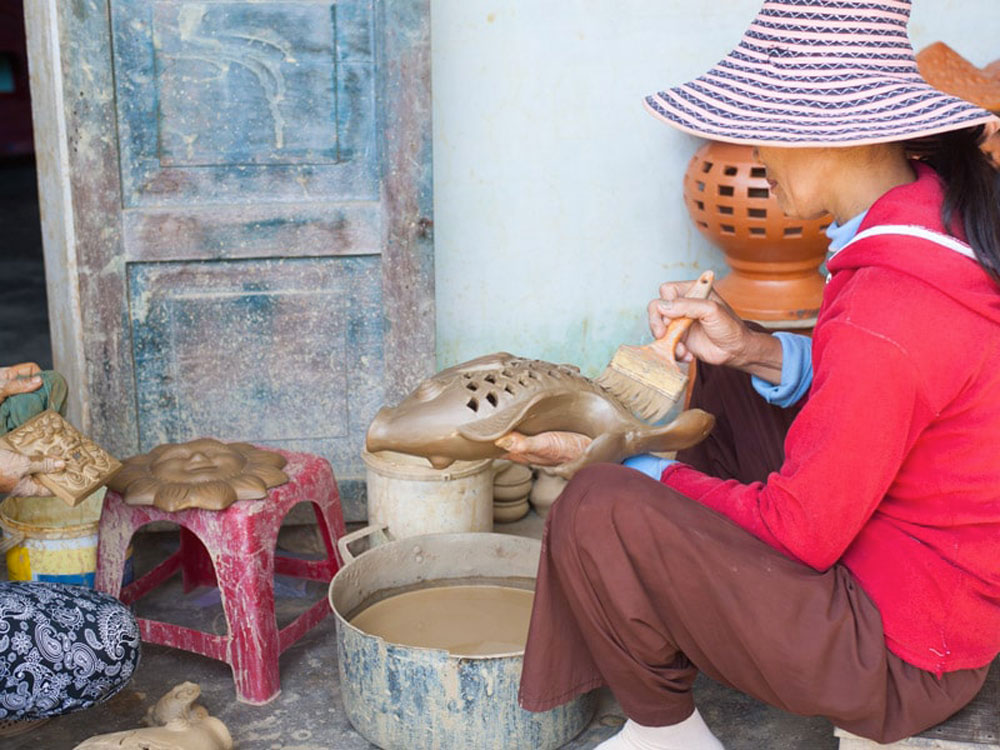
If you’re visiting Hoi An, I honestly think this is a must-see. It’s not a spectacular attraction, but it’s authentic, vibrant, and deeply rooted in local culture. The craftsmanship is real, the skills are genuine, and you can feel a true connection to the daily lives of the artisans.
If you’re into handmade crafts, simple encounters, or just want to get out of the Old Town for a while, it’s a great idea for a half-day trip – easy to fit into a morning or an afternoon.

